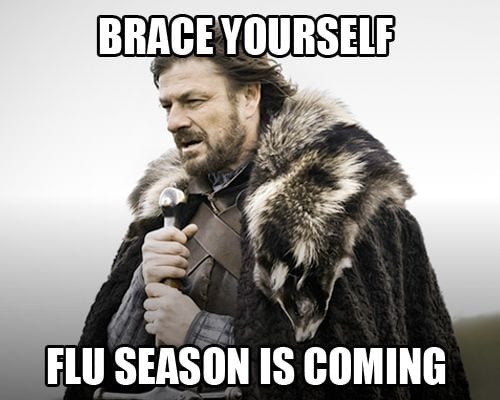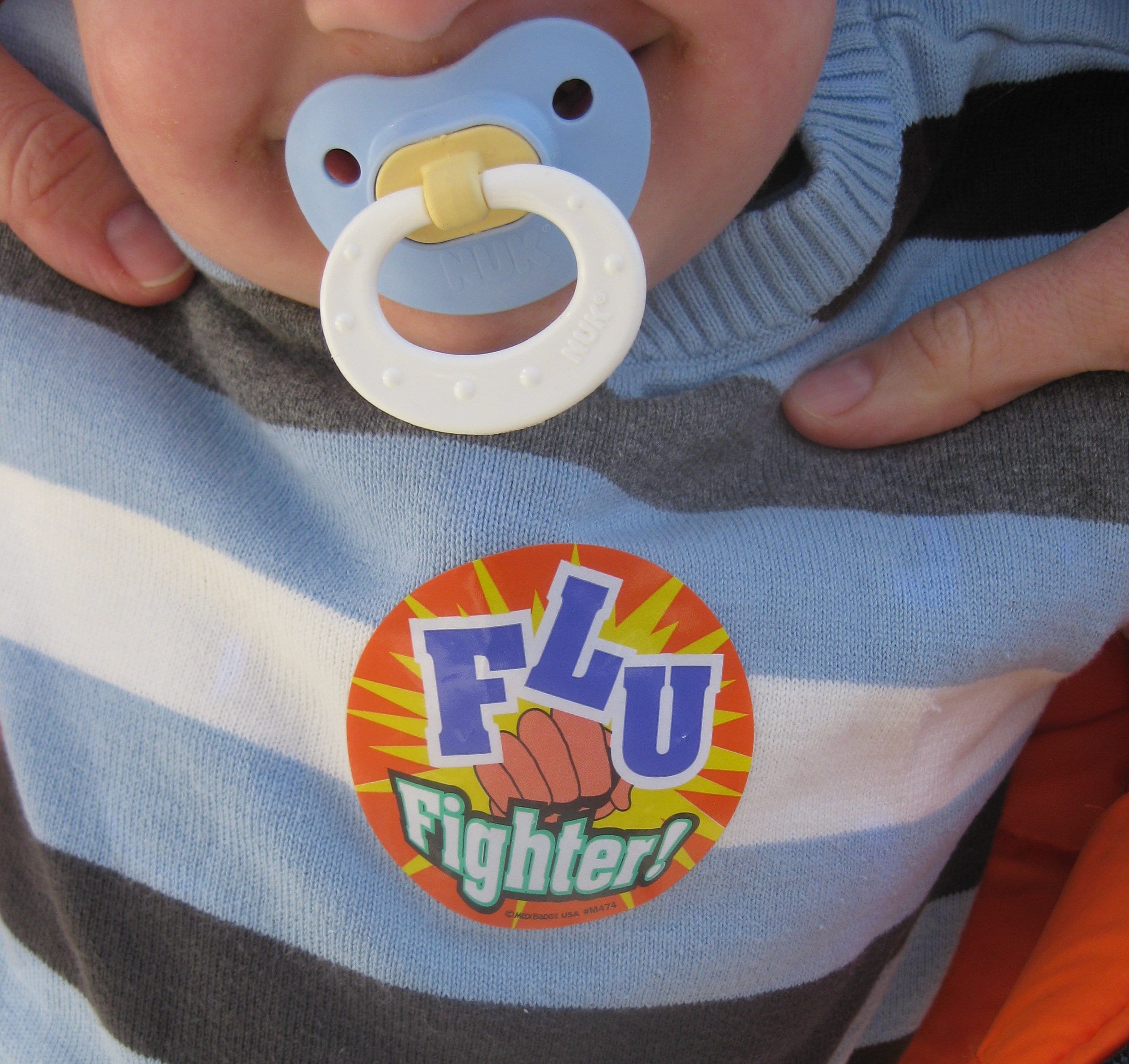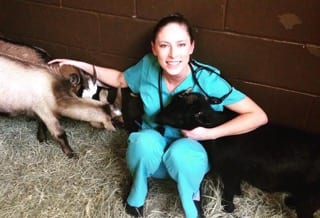
Flu season is coming in hot, folks! What better way to prepare than by brushing up on your knowledge?
First let's recall the important features of influenza viruses. There are four types of influenza viruses: A, B, C, and D. As we saw in the previous influenza blog installment featuring canine influenza, the emergence of a new and very different influenza A virus can lead to an outbreak.
Influenza A viruses are divided into subtypes based on two proteins on the surface of the virus: the hemagglutinin (HA) and the neuraminidase (NA). There are 18 different HA subtypes and 11 different NA subtypes. Remember how I mentioned the alphabet soup last time?
Well, this wide selection of surface proteins allows the virus to mix and match them to create new viruses. Influenza viruses use this capability to undergo both small genetic changes and abrupt, major changes.
One way the viruses change is by antigenic drift. These drifts are small changes in the genes of influenza viruses that occur continuously over time as the virus replicates. These small genetic changes usually produce viruses that are closely related to one another. Viruses that are closely related usually share the same antigenic properties, and an immune system exposed to a similar virus will usually recognize it and respond, a process known as cross-protection. We can think of this relative to football; in essence, drift is similar to player substitutions within the same team. All the players are wearing the same jersey, but they have their own unique skill set and playing style.
But these genetic changes can accumulate over time and result in viruses that are antigenically different. When this happens, the body's immune system may not recognize those viruses. This is the main reason why people can get the flu more than one time, and also why the flu vaccine composition must be reviewed and updated each year.
The other type of change is called antigenic shift. Antigenic shift is a sudden, major change in the influenza A viruses, resulting in new HA and NA surface proteins in the influenza viruses that allow it to jump from one animal to another, including humans. If we think back to our football scenario, shift is similar to a player being traded to another team entirely. The player is still playing the same game but is now wearing a new jersey, or in this case new surface proteins.

Such a “shift†occurred during the 2009 H1N1 pandemic. This new virus caused the first influenza pandemic in more than 40 years! It is thought to be a reassortment of four known strains of influenza A virus subtype H1N1: one endemic in humans, one endemic in birds, and two endemic in pigs. When antigenic shift happens, most people have little or no protection against the new virus, which allows the virus to rapidly spread through the population.

While influenza viruses are changing by antigenic drift all the time, antigenic shift is more of a rarity. Unlike other influenza types, influenza A viruses undergo both kinds of changes, and that is the major reason that these viruses have such a severe impact on the health of people and animals.
This is why it is critical that you protect yourself and your pets from influenza A viruses. Next in this series, we will discuss a One Health approach to influenza prevention. More specifically, we will explore how influenza vaccines are made and how they work.
Feature Image Credit: The Daily Telegraph
 Lydia Anderson is a Dual DVM-PhD graduate student at the University of Georgia. Since completing her PhD in Infectious Diseases, she has been working on her DVM at the College of Veterinary Medicine with an emphasis in public health and translational medicine. She plans to use her training to help address the questions and challenges facing One Health due to emerging and zoonotic infectious diseases. When she is not busy learning how to save all things furry and playing with test tubes, Lydia can be found either freestyle cooking for her friends and family or binge watching Netflix with her rescue pup, Luna. More from Lydia Anderson.
Lydia Anderson is a Dual DVM-PhD graduate student at the University of Georgia. Since completing her PhD in Infectious Diseases, she has been working on her DVM at the College of Veterinary Medicine with an emphasis in public health and translational medicine. She plans to use her training to help address the questions and challenges facing One Health due to emerging and zoonotic infectious diseases. When she is not busy learning how to save all things furry and playing with test tubes, Lydia can be found either freestyle cooking for her friends and family or binge watching Netflix with her rescue pup, Luna. More from Lydia Anderson.
About the Author
-
athenssciencecafehttps://athensscienceobserver.com/author/athenssciencecafe/April 17, 2020
-
athenssciencecafehttps://athensscienceobserver.com/author/athenssciencecafe/April 12, 2020
-
athenssciencecafehttps://athensscienceobserver.com/author/athenssciencecafe/April 3, 2020
-
athenssciencecafehttps://athensscienceobserver.com/author/athenssciencecafe/March 30, 2020







